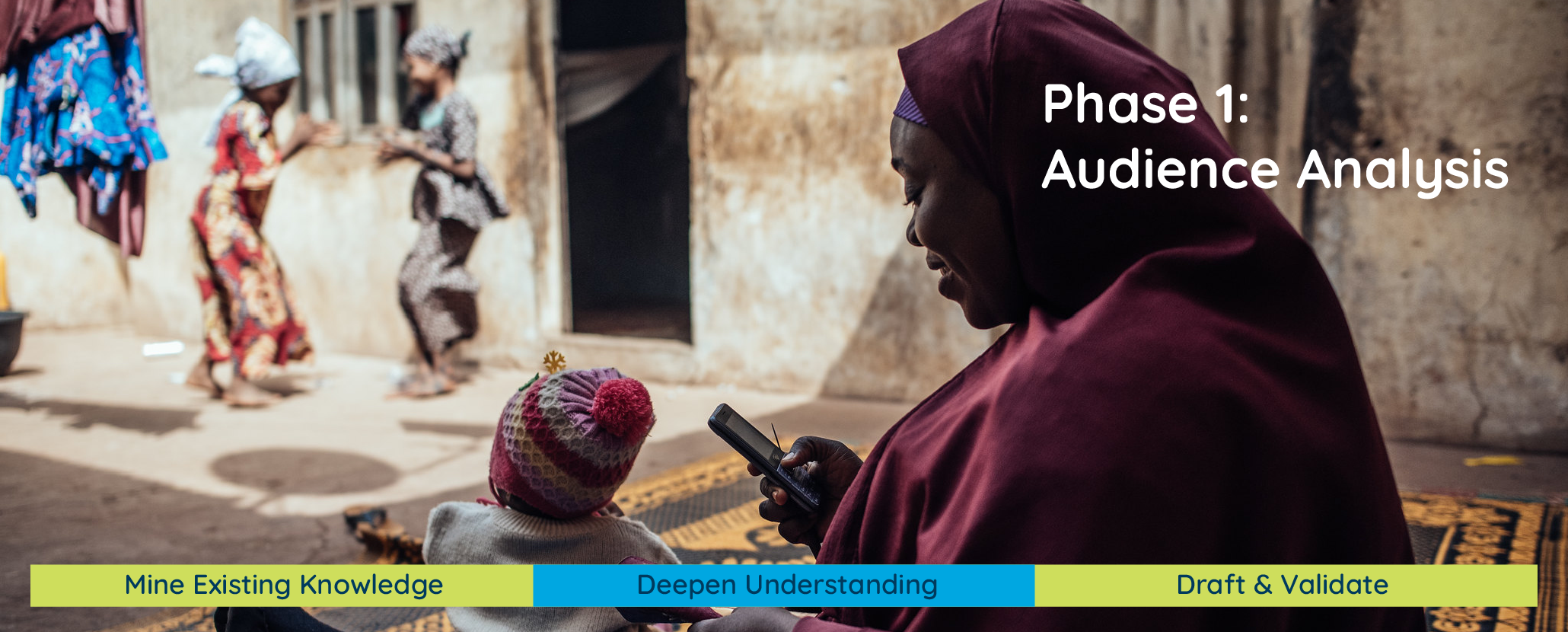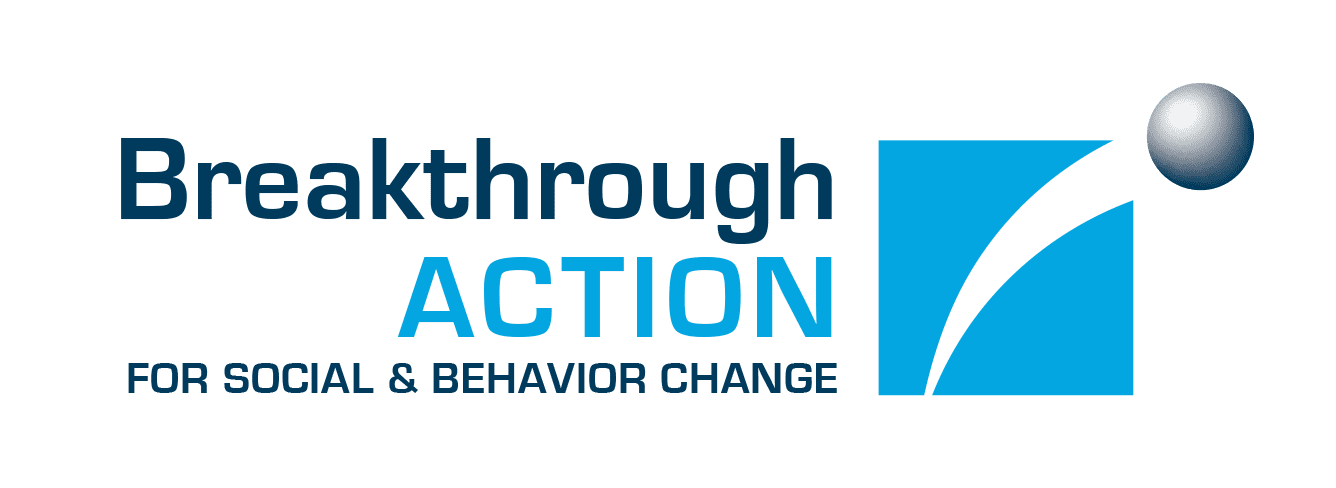Deepen Understanding

Les Audience Analysis phase establishes understanding of the intended audience and factors influencing their behavior. Gather evidence from existing knowledge and published literature. If more evidence is needed, consider whether to use quantitative or qualitative methods. Many of the tools below are adapted from the Implementing the SBC Flow Chart toolkit.
Deepen Understanding
How can we learn even more?
By the end of this step, your team should have a different perspective of the challenge to be addressed and empathy for the intended audience.
How to conduct this step and achieve its main objectives:
Conduct Quantitative Research
Quantitative research involves gathering and analyzing numerical data to better understand the intended audience, including statistical analysis to identify key demographic characteristics, social and behavioral determinants, and behavioral patterns. This data-driven approach guides the campaign’s strategies by providing insights into audience selection, what people and factors influence them, and the effectiveness of various SBC interventions.
Prioritizing SBC Determinants
Suggested time:
3 hours
Participants:
Core design team; RMEL unit
Tool: Prioritizing SBC Determinants
It is beyond the scope of this toolkit to provide you with the tools to conduct a quantitative study. If you need a quantitative study to complete your creative brief, you should work with your RMEL unit or similar department to plan and execute your study. Use the Insights Assessment tool to shape your research objectives and ensure the questionnaire addresses the gaps identified.
This tool helps you prioritize SBC determinants for your campaign. Start by working with your research team to develop a table of these SBC determinants, including logistic odds ratios or similar measures of association from the quantitative study. These measures identify the strength of the relationship between different determinants and the behavior your campaign is promoting, as well as how likely an increase or decrease in that determinant will result in someone adopting that behavior.
Effort required:

Conduct Immersive Research
Immersive research puts you in the center of the action, offering unique perspectives often missed from a distance. This approach widens the scope to help identify where interactions occur, foster empathy for your audience, and shape your creative work. Findings from quantitative research and the SBC determinant prioritization activity should guide your qualitative research, helping you obtain deep insights about the intended audience.
Immersive Research Package
Suggested time:
Multiple days depending on size and scope
Participants:
Core design team; research team; stakeholders; intended audience
Tool: Immersive Research Package
The immersive research package is a comprehensive resource containing a research protocol framework, a suite of methodological tools, and data collection templates. These materials support researchers in conducting studies. The templates are adaptable to various contexts to promote in-depth exploration and understanding of the needs of the intended audience.
Effort required:

Synthesize the Data
Synthesis allows you to organize collected data into themes by distilling and clustering findings. You can use empathy tools (e.g., journey maps, personas) to summarize the data and preserve the human element of your intended audience.
Root Cause Analysis
Suggested time:
3–4 hours
Participants:
Core design team; RMEL unit
Tool: Root Cause Analysis
A root cause analysis identifies the primary source of a problem. In SBC, a root cause analysis examines differences between the desired state of a health or social issue (i.e., the vision) and what is currently happening (i.e., the present situation).
Effort required:

Behavioral Journey Map
Suggested time:
5-6 hours
Participants:
Core design team; RMEL unit
Tool: Behavioral Journey Map
A behavioral journey map is a visual representation used to analyze and comprehend an individual’s actions, emotions, and experiences within a particular process or interaction. By identifying significant influences, emotional states, and barriers, it offers valuable insights into user behavior, as well as where and when to engage with the audience.
Effort required:

Generate Insights
Adding analyses from new findings adds to existing knowledge and uncovers opportunities for change and novel insights that may shift perspectives on how to design your program. These insights connect information and inspiration in new ways.
Insights 101 Playbook
Suggested time:
2-4 hours
Participants:
Core design team; RMEL unit
Tool: Insights 101 Playbook
The Insights Playbook explains a key building block of SBC project design and the basics of identifying and articulating insights to help you work on the Behavioral Insights Template. Insights distilled from formative research allow you to incorporate your research findings into your design. This playbook offers concise and practical guidelines for doing so, with examples of insights and how to apply and share them across project partners.
Effort required:



